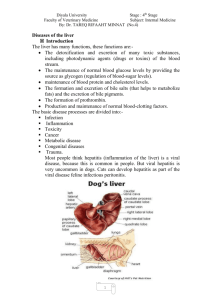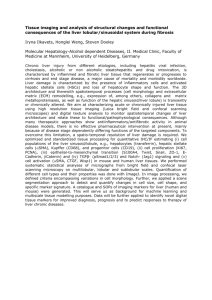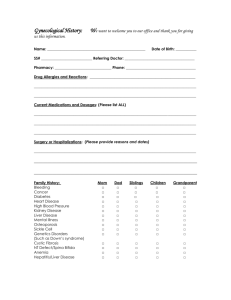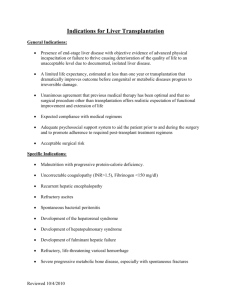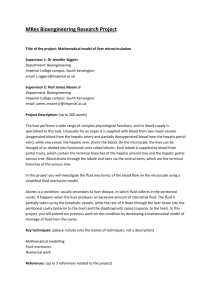Liver Regeneration - Can one survive without transplant
advertisement
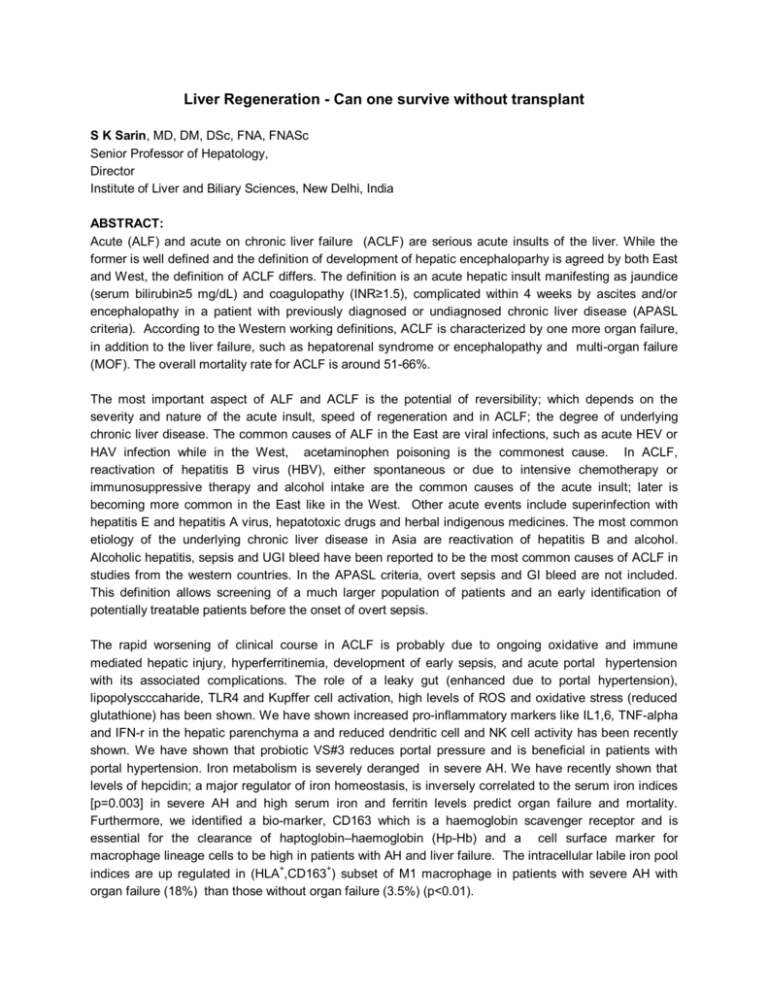
Liver Regeneration - Can one survive without transplant S K Sarin, MD, DM, DSc, FNA, FNASc Senior Professor of Hepatology, Director Institute of Liver and Biliary Sciences, New Delhi, India ABSTRACT: Acute (ALF) and acute on chronic liver failure (ACLF) are serious acute insults of the liver. While the former is well defined and the definition of development of hepatic encephaloparhy is agreed by both East and West, the definition of ACLF differs. The definition is an acute hepatic insult manifesting as jaundice (serum bilirubin≥5 mg/dL) and coagulopathy (INR≥1.5), complicated within 4 weeks by ascites and/or encephalopathy in a patient with previously diagnosed or undiagnosed chronic liver disease (APASL criteria). According to the Western working definitions, ACLF is characterized by one more organ failure, in addition to the liver failure, such as hepatorenal syndrome or encephalopathy and multi-organ failure (MOF). The overall mortality rate for ACLF is around 51-66%. The most important aspect of ALF and ACLF is the potential of reversibility; which depends on the severity and nature of the acute insult, speed of regeneration and in ACLF; the degree of underlying chronic liver disease. The common causes of ALF in the East are viral infections, such as acute HEV or HAV infection while in the West, acetaminophen poisoning is the commonest cause. In ACLF, reactivation of hepatitis B virus (HBV), either spontaneous or due to intensive chemotherapy or immunosuppressive therapy and alcohol intake are the common causes of the acute insult; later is becoming more common in the East like in the West. Other acute events include superinfection with hepatitis E and hepatitis A virus, hepatotoxic drugs and herbal indigenous medicines. The most common etiology of the underlying chronic liver disease in Asia are reactivation of hepatitis B and alcohol. Alcoholic hepatitis, sepsis and UGI bleed have been reported to be the most common causes of ACLF in studies from the western countries. In the APASL criteria, overt sepsis and GI bleed are not included. This definition allows screening of a much larger population of patients and an early identification of potentially treatable patients before the onset of overt sepsis. The rapid worsening of clinical course in ACLF is probably due to ongoing oxidative and immune mediated hepatic injury, hyperferritinemia, development of early sepsis, and acute portal hypertension with its associated complications. The role of a leaky gut (enhanced due to portal hypertension), lipopolyscccaharide, TLR4 and Kupffer cell activation, high levels of ROS and oxidative stress (reduced glutathione) has been shown. We have shown increased pro-inflammatory markers like IL1,6, TNF-alpha and IFN-r in the hepatic parenchyma a and reduced dendritic cell and NK cell activity has been recently shown. We have shown that probiotic VS#3 reduces portal pressure and is beneficial in patients with portal hypertension. Iron metabolism is severely deranged in severe AH. We have recently shown that levels of hepcidin; a major regulator of iron homeostasis, is inversely correlated to the serum iron indices [p=0.003] in severe AH and high serum iron and ferritin levels predict organ failure and mortality. Furthermore, we identified a bio-marker, CD163 which is a haemoglobin scavenger receptor and is essential for the clearance of haptoglobin–haemoglobin (Hp-Hb) and a cell surface marker for macrophage lineage cells to be high in patients with AH and liver failure. The intracellular labile iron pool + + indices are up regulated in (HLA ,CD163 ) subset of M1 macrophage in patients with severe AH with organ failure (18%) than those without organ failure (3.5%) (p<0.01). Sepsis is one of the most important causes of increased morbidity and mortality in patients with severe alcoholic hepatitis. Reduced dendritic cell activity leads to enhanced CD6 activity and increased rIFN production and liver damage. Neutrophil dysfunction worsens the course and leads to the development of sepsis, hepato-renal syndrome and hepatic encephalopathy. Granulocyte colony stimulating factor (GCSF) therapy has been shown to improve neutrophil function. In a recent study, we have shown that GCSF improved median leucocyte and neutrophil count at wk1 and improved MELD and SOFA score which resulted in improved survival. Moreover, G-CSF therapy led to a significant increase in the CD34 and dendritic cell (DC) population in the liver at 1 month. After GCSF therapy, recruitment of mDCs and pDCs favorably modulates intra-hepatic T cell responses in the liver with reduced production IFN-r by the CD4, and CD8 T cells. These new therapeutic approaches, based on new pathophysiological mechanisms are likely to improve the survival of patients with ACLF. G-CSF therapy is promising also in hepatic regeneration as it led to increased mobilization of CD34+ cells to the liver in ACLF patients. New options for support of failing liver, include liver dialysis (just a membrane to remove toxins) and bioartificial liver (using live hepatic cells for supporting hepatic synthetic functions). These new approaches could provide some support, but not an alternative to liver transplantation.

